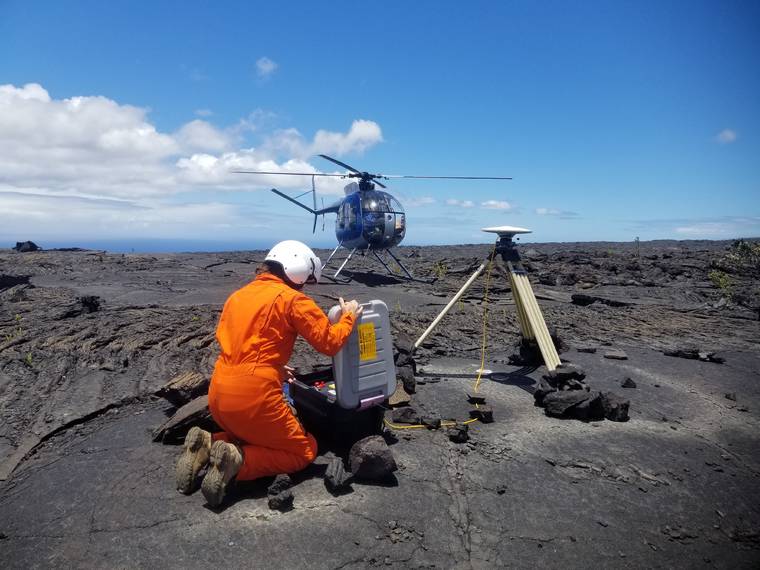Kilauea volcano is stirring once again, but scientists reassure that, for now, its volcanic activity is limited to the summit.
The Hawaiian Volcano Observatory early Tuesday raised its alert level for Kilauea from “advisory” to “watch,” and its aviation color code from “yellow” to “orange,” after a series of minor earthquakes under Hawaii Volcanoes National Park that occurred Monday afternoon throughout Tuesday.
HVO Scientist-in-Charge Ken Hon said the surge in earthquakes was a “significant increase” from normal, with at least 10 an hour being detected Tuesday. According to HVO data, most quakes detected were between magnitudes 1.6 and 2.3, although a swarm of quakes around 1:30 a.m. Tuesday averaged a bit larger, with one reaching as high as magnitude 3.4.
“We’ve been picking up a steady drumbeat all day,” Hon said Tuesday.
Other than the sheer number of tremors, Hon said the concentration of quakes is telling: Most of the earthquakes originated from beneath the southern edge of the Kilauea caldera in HVNP.
At the same time, Hon said HVO tiltmeters picked up unusual ground deformation. This suggests, he said, shallow movements of underground magma near the caldera.
Lava intruded into the same area as a precursor to the 1983 Pu‘u ‘O‘o eruption, Hon said. However, a similar intrusion at the same place occurred in 2015, which did not lead to an eruption, he added.
The current volcanic activity could end with lava rising to the surface somewhere, or it could peter out after a time. Hon said there is no way to accurately predict how the situation will play out.
Hon also said there is no sign at the surface of volcanic activity. Sensitive visitors to the park might notice occasional tremors, he said, but many of the weaker quakes are too small for even HVO’s instruments to pinpoint their locations, let alone to be detected by a human at the surface.
Hon emphasized that there currently is no reason to suspect the volcanic activity will extend beyond the caldera.
“There’s no indication of lava moving anywhere outside the caldera system,” Hon said. “There’s no quakes in the East Rift Zone at the moment at all.”
For now, Hon said HVO will continue to monitor the situation.
HVO last changed Kilauea’s alert level in June, when it was lowered from “watch” to “advisory” after a period of inactivity following a 5-month-long eruption. That eruption began in December, and was accompanied by HVO raising the alert level from “normal,” the lowest level, to “warning,” the highest.
The December eruption created a lava lake in Halema‘uma‘u crater hundreds of meters deep, which has since cooled over.
The current “watch” status indicates “heightened or escalating unrest with increased potential of eruption” within an uncertain timeframe. The “orange” aviation color code indicates the same.
Email Michael Brestovansky at mbrestovansky@hawaiitribune-herald.com.




